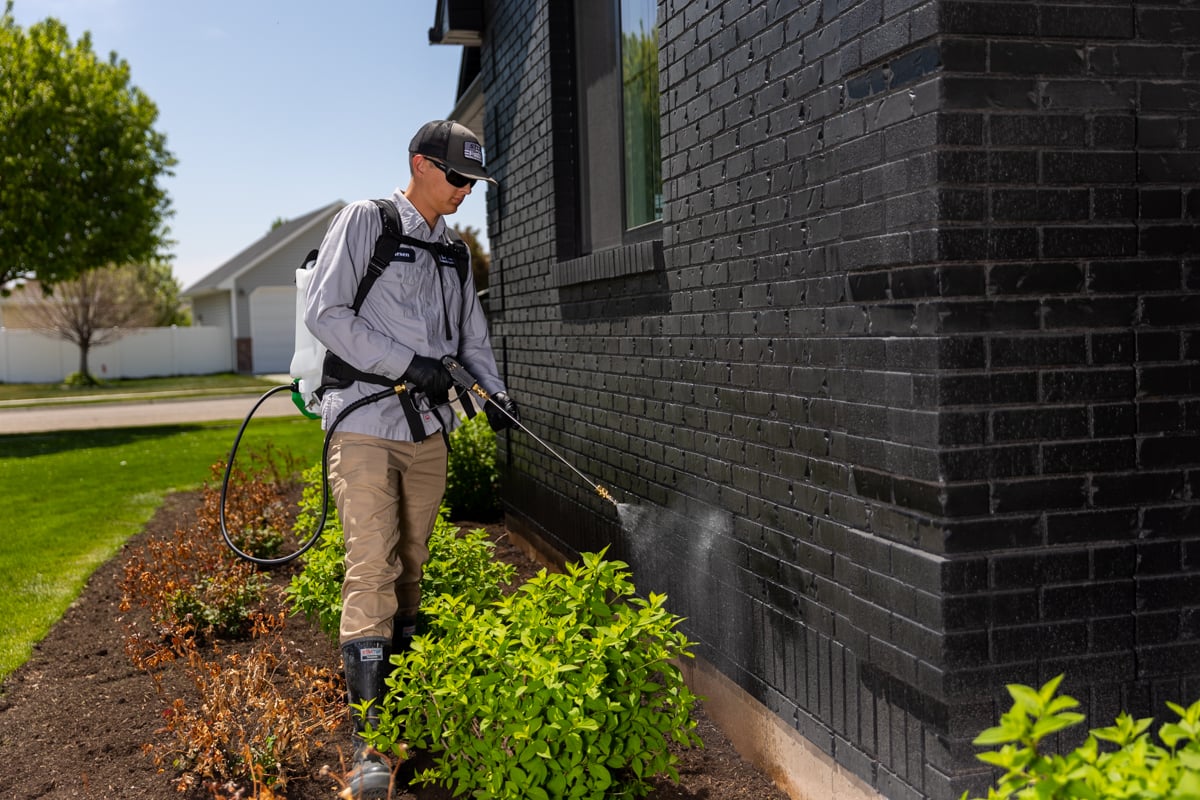A1 Bed Bug Exterminator Charlotte - Specialized Bed Bug Removal
A1 Bed Bug Exterminator Charlotte - Specialized Bed Bug Removal
Blog Article
Bed Insect Therapy Failure: Comparing Chemical Vs. Non-Chemical Solutions
In the world of insect control, particularly when managing the consistent concern of bed bugs, the option in between chemical and non-chemical treatment remedies can be a pivotal one. Both techniques supply unique benefits and drawbacks, influencing aspects such as performance, security factors to consider, and overall cost. By taking a look at the nuanced information of each technique, a more clear understanding of which course to go after in resolving a bed insect problem can be attained.
Efficiency of Chemical Treatments
Chemical treatments for bed pest infestations have been commonly acknowledged for their rapid and powerful efficiency in getting rid of these bugs. When thinking about the effectiveness of chemical therapies, it is vital to comprehend that they can provide a fast and extensive service to a bed insect trouble.
Furthermore, chemical therapies have the benefit of providing recurring impacts, implying that they can remain to get rid of bed pests also after the initial application. This recurring action is especially valuable in combating any type of potential re-infestations. Furthermore, the quick activity of chemical treatments can bring alleviation to individuals dealing with serious bed insect infestations, enabling them to reclaim control of their home promptly.
Safety And Security Issues With Chemical Solutions
One vital facet that requires mindful factor to consider when using chemical solutions for bed bug therapy is making certain the security of occupants and the environment. Direct exposure to specific chemicals used in bed insect treatments can lead to respiratory concerns, skin inflammation, or various other unfavorable responses, specifically in people with pre-existing conditions or level of sensitivities.
Furthermore, the ecological effect of chemical services is an additional significant factor to consider. Some pesticides made use of in bed insect therapies may be unsafe to helpful insects, wild animals, and ecological communities if they seep right into the dirt or water supply. It is vital to make use of chemical treatments sensibly, following security guidelines, and taking into consideration less poisonous alternatives to reduce these threats and ensure the secure and effective management of bed pest infestations.
Advantages of Non-Chemical Strategies
Considering the possible safety and security issues and environmental influence connected with chemical solutions for bed bug therapy, checking out non-chemical methods presents an appealing option with several unique benefits. Non-chemical therapies are environmentally pleasant, as they do not contribute to air or water pollution, making them a lasting selection for bug control.
Furthermore, non-chemical options can be efficient in targeting bed bugs, including hard-to-reach areas where chemical therapies may not permeate. Techniques such as heat therapy, vacuuming, steam cleansing, and mattress encasements provide comprehensive eradication without making use of hazardous chemicals. Furthermore, non-chemical approaches can be much less turbulent, needing marginal prep work and allowing for quicker reentry right into treated locations. Overall, choosing non-chemical bed insect therapy methods not just focuses on safety and ecological protection however additionally makes sure extensive and reliable pest control.
Limitations of Non-Chemical Treatments

In addition, non-chemical treatments commonly call for several applications to achieve effective eradication. This can be lengthy and might not constantly ensure total removal of all bed bugs and their eggs, especially in concealed or hard-to-reach areas.
Furthermore, the success of non-chemical treatments greatly counts on proper execution and thoroughness, which can be challenging for individuals without professional experience. Insufficient application of non-chemical methods might lead to incomplete elimination, causing relentless infestations and the demand for extra therapies.
Consequently, while non-chemical therapies have their benefits, it is important to acknowledge these restrictions and consider them when figuring out one of the most effective approach for taking care of bed bug problems.
Cost Comparison: Chemical Vs. Non-Chemical Options
Given the restrictions related to non-chemical treatments, an important aspect to assess in the context of bed pest management is the expense contrast between chemical and non-chemical alternatives. Chemical treatments usually include the application of insecticides by professionals, which can vary from $250 to $900 per room, depending on the extent of the problem and the dimension of the area to be dealt with. In comparison, non-chemical therapies like warm treatment or steam can be more expensive, with prices varying from $1,000 to $6,000 check here for an entire home. While the initial price of chemical treatments may appear reduced, multiple therapies might be required to completely get rid of the invasion, potentially raising the total expense. On the other hand, non-chemical alternatives might offer a much more green and lasting option, although they can be cost-prohibitive for some people. Eventually, when taking into consideration the expense of bed bug therapy alternatives, it is very important to evaluate the ahead of time costs versus the efficiency and long-lasting sustainability of the selected method.
Verdict

Thinking about the possible safety issues and environmental influence associated with chemical remedies for bed bug treatment, discovering non-chemical approaches provides an appealing alternative with a number of distinctive advantages.Given the restrictions connected with non-chemical treatments, a crucial aspect to assess in the context of bed pest management is the expense comparison in between chemical and non-chemical alternatives. In comparison, non-chemical treatments like heat treatment or heavy steam can be a lot more pricey, with prices ranging from $1,000 to $6,000 for an entire home. While the initial cost of chemical treatments may seem reduced, numerous therapies might be called for to fully get rid of the infestation, possibly enhancing the general price.In verdict, when contrasting chemical and non-chemical bed pest therapy alternatives, it is vital mouse removal to think about view performance, safety and security, advantages, constraints, and price.
Report this page